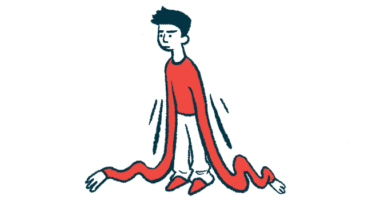New Guidelines Help Define Best Treatment Timeline for SMA Infants

A working group led by Cure SMA, and comprising 15 experts on spinal muscular atrophy (SMA), has developed new guidelines to help clinicians and caregivers decide when to administer therapy to infants with the disease.
These come as a response to the recent recommendation by the Advisory Committee on Heritable Disorders in Newborns and Children (ACHDNC) to add SMA to the Recommended Uniform Screening Panel (RUSP) of the U.S. Department of Health and Human Services.
Also, since approval of the therapy Spinraza (nusinersen), several states have begun implementing SMA newborn screening, reinforcing the need for new treatment guidelines.
The study “Treatment Algorithm for Infants Diagnosed with Spinal Muscular Atrophy through Newborn Screening,” was published in the Journal of Neuromuscular Diseases.
Several pre-clinical and clinical studies have demonstrated that early treatment is critical to controlling SMA development and progression rates. Beginning treatment before the onset of muscle weakness and nerve cells’ irreversible damage has proven to be an efficient approach.
However, symptoms’ onset and diagnosis seems to vary according to different SMA types, which may hamper decisions about treatment. Implementation of newborn screenings targeting SMA could dramatically change that situation, promoting early diagnosis and making early intervention possible.
The new guidelines are based on the knowledge that disease severity is directly correlated with the underlying genetic alteration that promotes SMA. Experts recommend that all infants with confirmed SMA type 1 or 2 — the most common and severe forms of the disease — who have only two or three copies of the SMN2 gene should receive immediate treatment with an SMN up-regulating therapy.
For patients with only one copy of SMN2 (SMA type 0), treatment should be at the physician’s discretion if the infant is symptomatic. However, if the infant is still in a pre-symptomatic stage treatment should begin immediately.
For patients with four or more SMN2 copies, researchers did not reach a treatment guideline consensus. As such, they developed a plan for screens and tests that allow appropriate monitoring and accurate determination of symptoms’ onset.
These patients should be followed by a neuromuscular specialist who will warrant the precise quantification of the number of SMN2 copies they have. Also, routine evaluations should be performed every three to six months until the patient reaches 2 years old, after which monitoring should done every six to 12 months. During this time parents and caregivers also should be on the lookout for every minor alteration and address new symptoms with physicians. Those symptoms include:
- changes in movement, feeding, or breathing patterns;
- change in voice;
- increased fatigue;
- motor decline or loss of function, or;
- failure to thrive.
“The identification SMA affected infants via newborn screening presents an unprecedented opportunity for achievement of maximal therapeutic benefit through the administration of treatment pre-symptomatically,” the researchers wrote. “The recommendations provided here are intended to help formulate treatment guidelines for infants who test positive during the newborn screening process,” they added.
These guidelines, as well as the effort made to raise awareness about the importance of SMA newborn screenings, were supported by the SMA Newborn Screening Coalition, which includes Biogen, AveXis, and Genentech/Roche.
Guidelines as recommended by the authors:
Guideline 1: For those patients in whom treatment is not initiated immediately, routine follow-up care should ideally be provided by a neuromuscular specialist;
Guideline 2: Infants identified as having four or more copies of SMN2 should be referred to someone who can identify their exact copy number;
Guideline 3: For those patients in whom treatment is not initiated immediately, routine follow-up care should ideally occur every three to six months until the patient reaches two years of age and every six to twelve months thereafter;
Guideline 4: Assuming the patient is the appropriate age for a specific test, the following are recommended as follow-up assessments in patients not initially treated: electromyography (EMG), compound muscle action potential (CMAP) monitoring, myometry, physical examinations, and motor function scales;
Guideline 5: Physicians should instruct parents/caregivers to contact them immediately if they see any of the following symptoms:
- changes in movement, feeding, or breathing patterns;
- change in voice/weak cry;
- increased fatigue without increasing activity;
- trouble feeding in young children or infants;
- decline or loss of function in previously attained motor ability or failure to show progress in expected motor ability;
- abdominal breathing;
- failure to thrive







